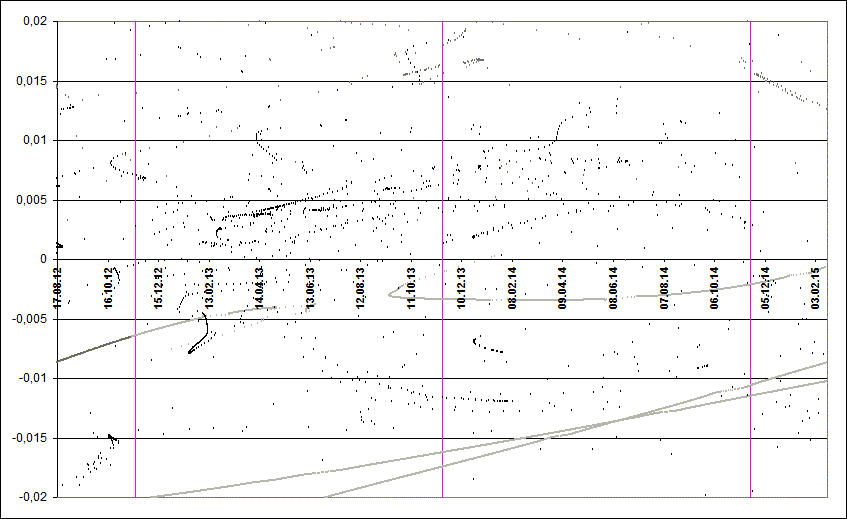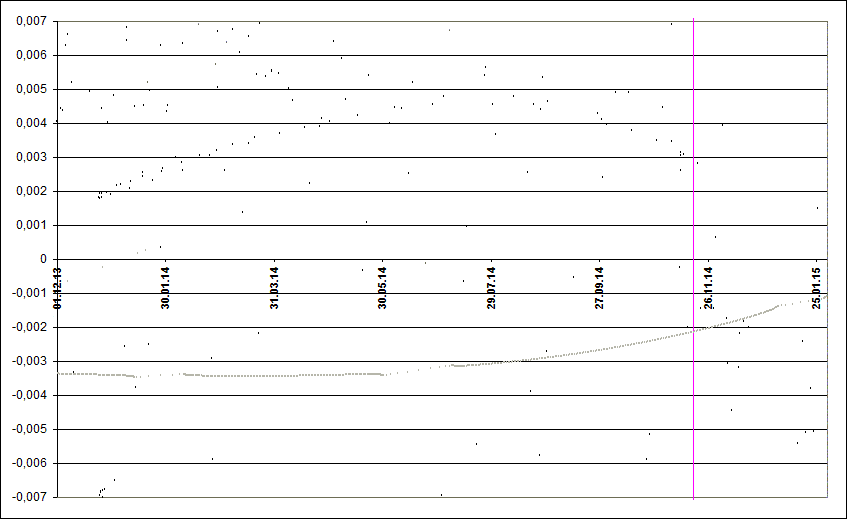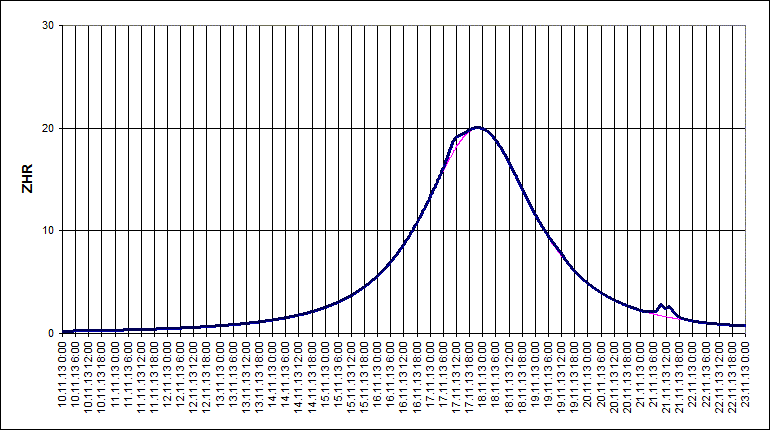Leonids 2014: prediction of activity
to the list of predictions

Fig. 1. Space-temporal projection of Leonids trails parts onto their minimal distance passages dirung the period (correspondence between colours of the particles and their ejection velocities can be seen here).

Fig. 2. Detailed space-temporal projection of Leonids trails parts onto their minimal distance passages in 2014 (correspondence between colours of the particles and their ejection velocities can be seen here).

Fig. 3. Assumed profile of overall Leonid activity (blue line) and its background component (red line).
A single background maximum is expected for Leonids in 2014. According to the IMO data, it occurs on the solar longitude 235.27°, in 2014 it corresponds to 22:02 UT 17 November. As observations show, in "usual" years its maximum ZHR is around 15-20.
No other notable activity peaks were found. Far from background maximum, within 11-15 UT on 21 November a small amount of meteors can be produced by very rarified 1567 trail, however this addition should be very small (ZHRex=1 from 1567 trail, ZHRex=2-3 from 1567 trail plus background activity).
References
1. "Comet's dust 2.0" program by S. Shanov and S. Dubrovsky. [Used for orbital computations.]
2. Lyytinen E, van Flandern T. "Predicting the strength of Leonid outbursts", 2000, Icarus, P. 158-160.
3. Jenniskens P. Meteor showers and their parent comets, 2006, 780 p. 4. Kasuo Kinoshita, http://jcometobs.web.fc2.com/ [Orbital elements of the comet 55P Tempel-Tuttle]